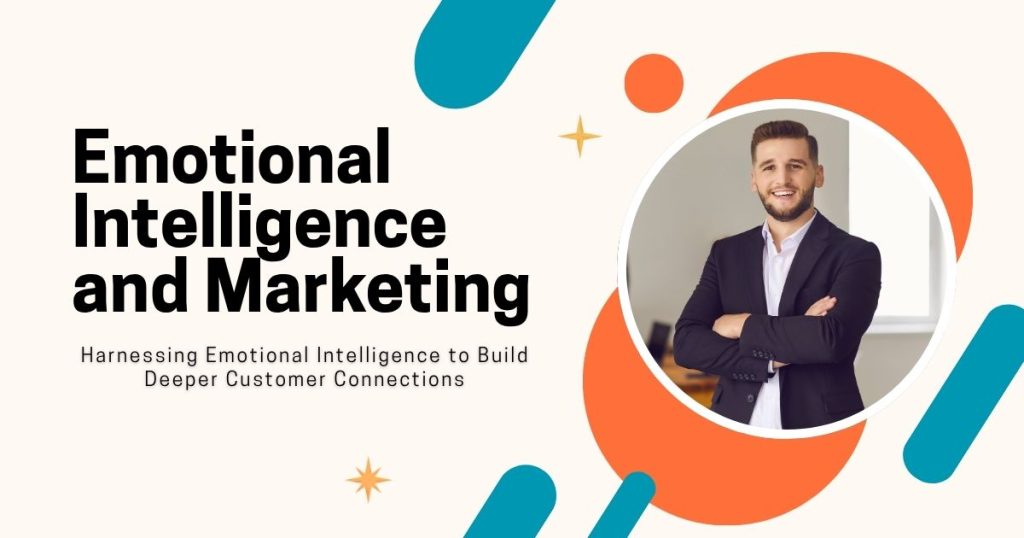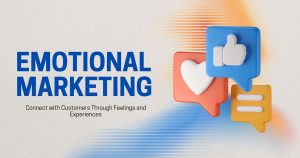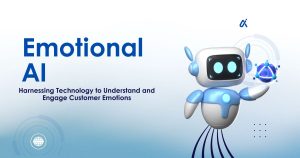Emotional Intelligence and Marketing: Your Secret Weapon

Emotions drive purchasing decisions. Studies show that 95% of buying decisions happen in the subconscious mind, where feelings reign supreme. Yet many marketers still rely heavily on logic-based messaging, missing the opportunity to connect with customers on a deeper level.
Emotional intelligence and marketing work hand in hand to create campaigns that resonate. When marketers understand how emotions influence behavior, they can craft messages that not only capture attention but also inspire action. This isn’t about manipulation—it’s about genuine connection.
Understanding your audience’s emotional landscape transforms how you communicate your brand’s value. The most successful campaigns tap into universal human experiences: the desire for belonging, the fear of missing out, the satisfaction of solving a problem. By developing emotional intelligence as a marketer, you gain the ability to recognize these deeper motivations and speak directly to them.
What Is Emotional Intelligence in Marketing?
Emotional intelligence in marketing refers to the ability to recognize, understand, and effectively respond to the emotions of your target audience. This skill extends beyond basic demographics and buyer personas to encompass the emotional triggers that drive consumer behavior.
Marketers with high emotional intelligence can identify the feelings their audience experiences throughout the customer journey. They understand that a person researching software solutions might feel overwhelmed by options, while someone making a luxury purchase might seek validation and status.
This understanding translates into more effective messaging, better timing, and stronger brand connections. Instead of simply listing product features, emotionally intelligent marketers frame benefits in terms of how customers will feel when using their product or service.
The Four Components of Marketing EQ
Self-awareness involves understanding your own emotional responses to marketing campaigns and customer feedback. Marketers who lack self-awareness might take negative reviews personally or let excitement about a product overshadow customer needs.
Self-regulation means managing your emotional responses professionally. This includes staying calm during PR crises, maintaining consistent brand voice across channels, and avoiding reactive decision-making based on short-term metrics.
Empathy allows marketers to genuinely understand their audience’s perspective. Empathetic marketers can anticipate customer concerns, identify unmet emotional needs, and create content that feels personally relevant.
Social skills encompass the ability to build relationships and communicate effectively across different channels and stakeholder groups. This includes everything from writing compelling copy to managing influencer partnerships.
How Emotions Shape Consumer Decisions
Neuroscience research reveals that emotions play a crucial role in decision-making. The limbic system, which processes emotions, evaluates options faster than the rational mind. By the time conscious thought kicks in, our emotional brain has already formed preferences.
Fear motivates consumers to seek security and avoid loss. Insurance companies leverage this emotion by highlighting risks and positioning their products as protection. However, fear-based marketing must be balanced carefully—too much anxiety can paralyze rather than motivate.
Joy and excitement create positive associations with brands. Apple’s product launches generate genuine enthusiasm by focusing on how their technology will enhance users’ lives rather than just technical specifications.
Trust emerges from consistent, authentic interactions over time. Patagonia builds trust by aligning their marketing messages with their environmental values and backing up claims with concrete actions.
Social acceptance drives many purchasing decisions, especially for visible products. Fashion brands understand this deeply, creating campaigns that help customers envision themselves as part of a desirable group.

Building Emotional Intelligence as a Marketer
Developing emotional intelligence requires intentional practice and ongoing learning. Start by paying closer attention to your own emotional responses to different marketing messages. What makes you feel excited about a product? When do you feel skeptical or turned off?
Listen actively to customer feedback across all channels. Read reviews, monitor social media comments, and participate in customer service conversations. Look beyond the literal words to understand the emotions driving complaints or praise.
Conduct regular customer interviews focused on feelings rather than just facts. Instead of asking “What features do you want?” try “How did you feel when you encountered this problem?” or “What would success look like to you?”
Study successful campaigns from other industries to expand your emotional vocabulary. Notice how different brands evoke specific feelings and the techniques they use to create emotional resonance.
Practical Exercises for Developing EQ
Create emotion maps for your customer journey. Identify the likely emotional state of customers at each touchpoint, from initial awareness through post-purchase support. This exercise reveals opportunities to address negative emotions or amplify positive ones.
Practice perspective-taking by writing from your customers’ point of view. Create fictional diary entries or internal monologues that capture their thoughts and feelings about your product category.
Analyze your competitors’ messaging through an emotional lens. What feelings do their headlines, images, and calls-to-action evoke? How does your brand’s emotional positioning compare?
Test different emotional approaches in your campaigns. Try fear-based messaging versus aspiration-based messaging for the same product and measure not just conversion rates but also brand perception metrics.
Applying Emotional Intelligence to Campaign Strategy
Emotionally intelligent marketing begins with understanding the emotional context surrounding your product or service. A financial planning service might encounter customers feeling anxious about retirement security, while a meal delivery service might reach people who feel overwhelmed by daily decisions.
Timing becomes crucial when emotions are involved. Messages about home security systems resonate differently during times of community unrest versus stable periods. Health and wellness brands must be particularly sensitive to external events that might affect their audience’s mental state.
Visual elements carry significant emotional weight. Colors, fonts, and imagery all contribute to the emotional tone of your message. A healthcare brand might choose calming blues and soft imagery to reduce anxiety, while an energy drink brand might opt for dynamic reds and action shots to create excitement.
Social proof takes on new importance through an emotional lens. Testimonials that focus on how customers felt before and after using your product carry more weight than those that simply describe features. “I finally felt confident in job interviews” resonates more than “The course covered all the topics I needed.”

Measuring Emotional Impact
Traditional marketing metrics like click-through rates and conversion rates tell only part of the story. Emotionally intelligent marketers also track sentiment analysis, brand perception surveys, and customer lifetime value as indicators of emotional connection.
Net Promoter Score (NPS) provides insight into emotional loyalty. Customers who actively recommend your brand have formed positive emotional associations that extend beyond simple satisfaction with your product.
Social media engagement patterns reveal emotional responses to your content. Comments, shares, and saves often indicate stronger emotional resonance than simple likes. Pay attention to the language people use when discussing your brand organically.
Customer retention rates reflect the strength of emotional bonds. While logical factors like price and features influence initial purchases, emotions drive repeat business and brand loyalty.
The Future of Emotional Marketing
Artificial intelligence and machine learning tools are making it easier to analyze emotional responses at scale. Sentiment analysis algorithms can process thousands of customer interactions to identify emotional patterns and trends.
However, technology should enhance rather than replace human emotional intelligence. Automated systems can flag potential issues or opportunities, but human marketers must interpret the data and craft appropriate responses.
Privacy concerns are reshaping how marketers collect and use emotional data. Building trust requires transparency about data collection practices and giving customers control over their information.
Authenticity becomes increasingly important as consumers become more sophisticated about marketing techniques. Brands that attempt to manufacture emotional connections without genuine backing will face backlash from audiences who value authenticity.

Transform Your Marketing Through Emotional Intelligence
Emotional intelligence and marketing create a powerful combination that goes beyond traditional demographic targeting. By understanding and responding to your audience’s emotional needs, you can build stronger relationships, increase customer loyalty, and drive sustainable business growth.
Start small by analyzing one customer touchpoint through an emotional lens. Identify the feelings your current messaging evokes and consider whether those emotions align with your goals. Then gradually expand this emotional awareness throughout your marketing strategy.
Remember that developing emotional intelligence is an ongoing process. Consumer emotions evolve with cultural shifts, personal experiences, and external events. Stay curious about your audience’s inner world, and your marketing will become more effective and more human.





